I don't know about you, but these days, I'm feeling rather blah in my own home. I'm working at home, relaxing at home, eating, sleeping, even socializing at home. I think you get the point here. Lately, I've been wondering: Is there anything I could possibly do to make my home feel less...chaotic?
Your home has more to do with your mental health and overall well-being than you probably realize. Sure, there are many "stressful" elements of home life that we can't really change (noisy neighbors, anyone?), but we also have the ability to modify and tweak others. So, I decided to chat with a design and well-being expert to hone in on design practices we could all implement — with the goal of making our day-to-day lives a little less stressful.

To dig in further, I spoke with two experts: Ben Channon, an architect and expert in design for well-being whose second book, The Happy Design Toolkit, was published earlier this year. And Eleanor Ratcliffe, a Lecturer in Environmental Psychology at the University of Surrey.

🏠 DESIGN TIP #1: Display art and other items because you personally find them beautiful — not just because you saw an aesthetically-pleasing trend online. In choosing what we display to our loved ones (and ourselves), the mental health benefits far outweigh any aesthetic value.
"When we look at things that we find visually beautiful, we actually get the same physical and psychological responses as when we fall in love," Ben told BuzzFeed. "Putting things in your home that you find beautiful is also one of the cheapest ways to make your home more uplifting."
Since the items you'd ideally choose to display in your home should inspire you, the person who lives there, you can disregard visual art "trends" if they're outside your budget (or if they never really resonated with you in the first place). If it speaks to you, it's probably worth displaying — whether it's a photo you love, something you found at a thrift store, or even a free downloaded print.
Eleanor echoed Ben's sentiments exactly and further suggested that beyond the obvious aesthetic appeal of personalizing our spaces with art, there's a lot to be said for the sense of identity it can give us when we have these tangible reminders of who we are embedded into our homes.

The items you'll choose to display in your home should be personal and unique to you, but these are just a few ideas if you need some help getting started:

🏠 DESIGN TIP #2: Incorporate "smart" technologies where it actually makes sense — but know when it's time to unplug, too. In doing so, you'll give yourself a better sense of control over your own space.
Smart homes are a hotly-debated topic — and for good reason. While many argue that it's only natural for our homes to evolve in the same technological ways that other aspects of our lives have, some are of the belief that our homes should be as tech-free as possible. When it comes to optimizing our homes for our well-being, I'm happy to report that a more "middle of the road" approach likely offers the best of both worlds.
"Control over our own lives has been identified as one of the key measures of happiness," Ben told BuzzFeed, "so our homes should be giving us control. Smart technology allows us to take more control over our homes than we've ever had before."
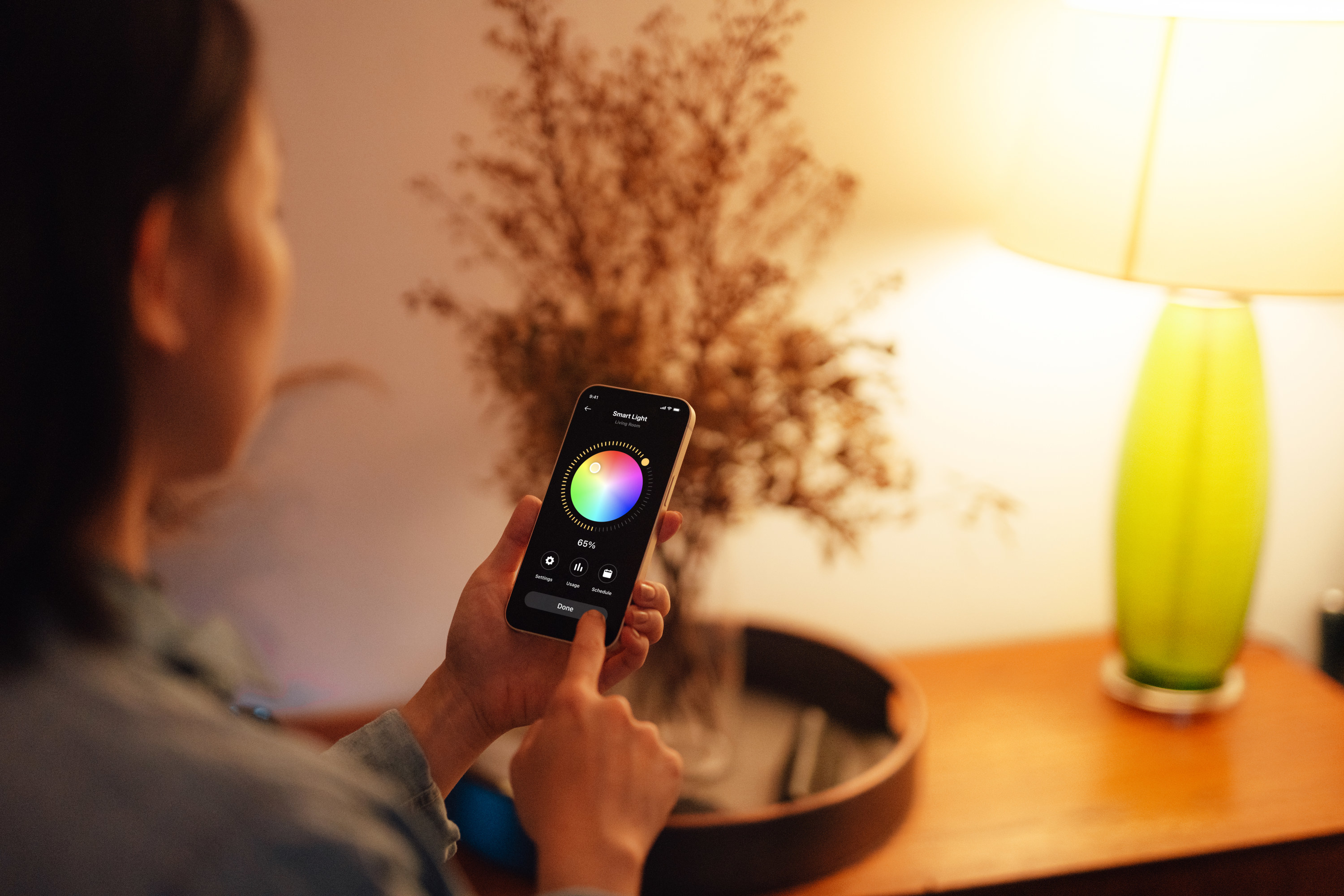
Certain applications of smart technology can even combat specific worries and anxieties that lots of folks deal with.

As beneficial as these smart technologies can be for our overall happiness, Ben does caution against letting technology completely dominate our lives. "There's a trap here of people adding smart tech for smart tech's sake," he said. "We risk people wanting to control everything via their phones, and we don't necessarily need that. We need to be aware of the impact that phones are having on our lives — at the end of the day, they're designed to be highly-addictive. In the long run, that actually makes us less happy."
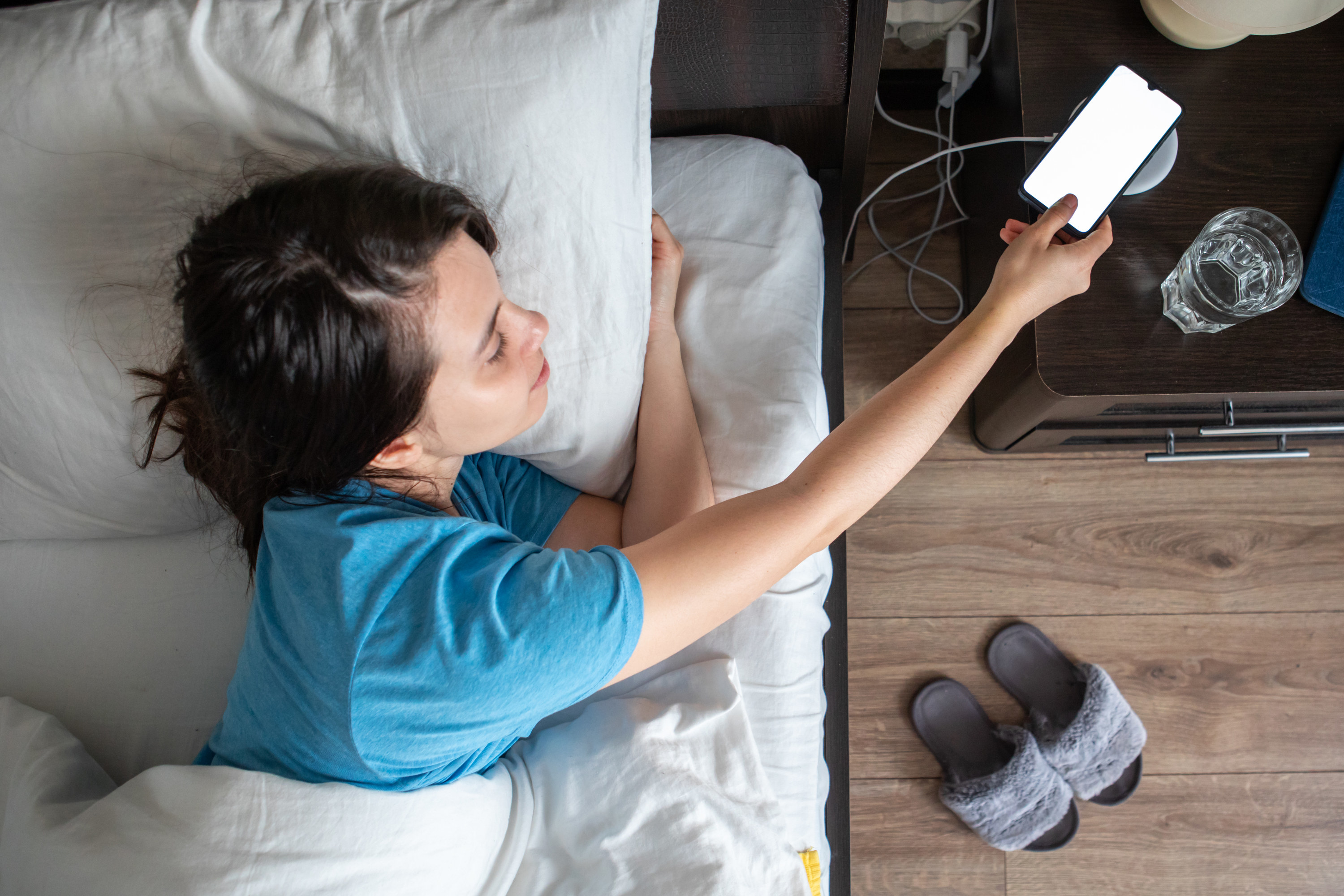
🏠 DESIGN TIP #3: Capitalize on "nudge behaviors" in your home by designating specific areas as home base for items you'd like to use more often.
Nudge behaviors can be complex, so I'll do my best to break the concept down as best I can: According to nudge theory, the decision-making processes that inform our behaviors are based on many different factors, including our own habits and biases. To guide ourselves toward better decisions, we can gently "nudge" ourselves in that direction — and that looks different depending on the circumstance. In the home, however, it can be as simple (and effective!) as designing our homes to encourage certain wellness-focused activities — like physical activity.
"As humans, we've evolved to conserve energy," Ben explained. "We're very good at doing that, so I never blame people who get into the habit of driving instead of walking or cycling. What we need to do is put a little barrier in the way of driving or make it more convenient for us to just walk or cycle."
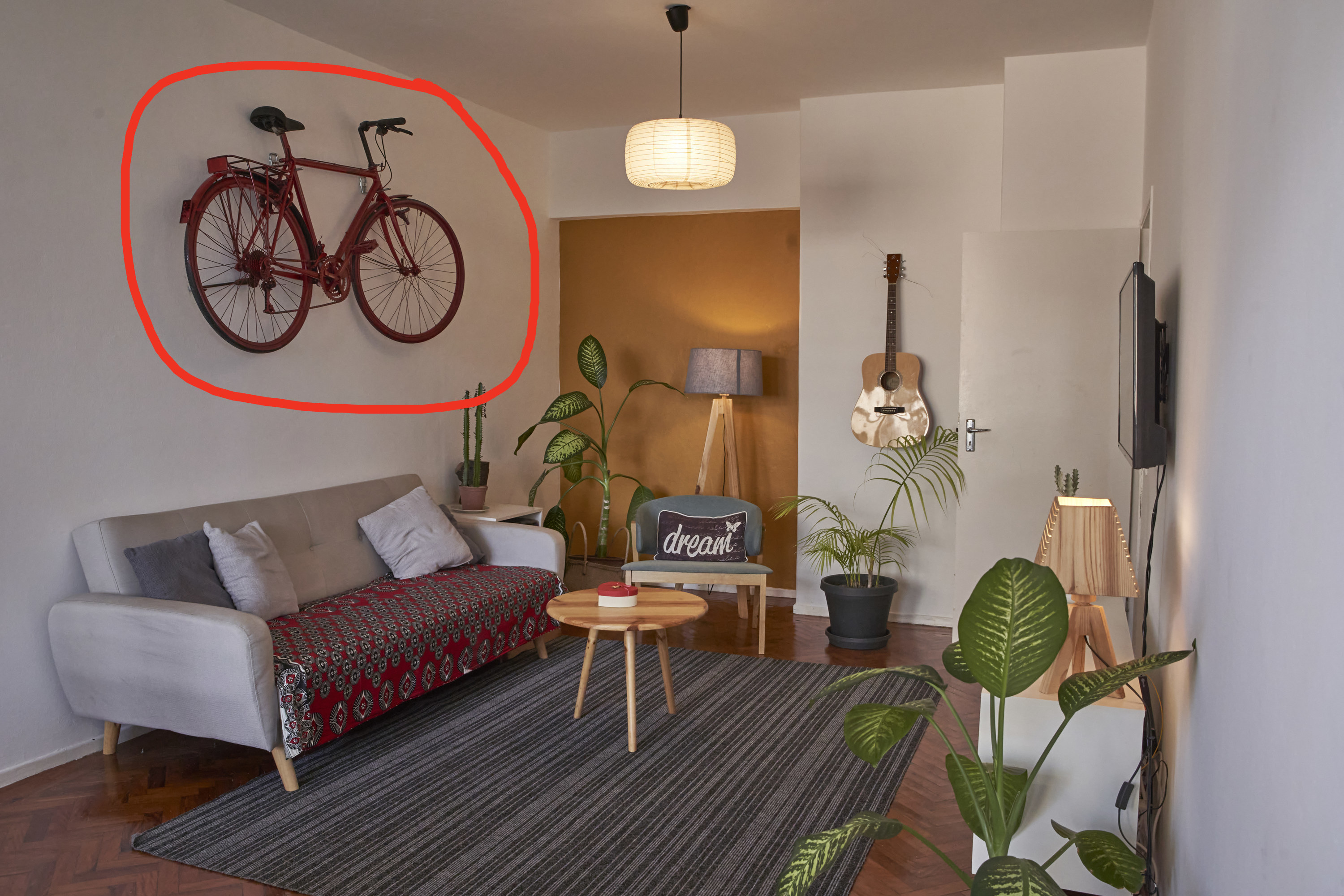
As he says, being purposeful about where you place these visuals cues "disrupts that autopilot mode we can all find ourselves in." Since physical activity in any form is closely linked with improved mental health, this tactic can be implemented for just about every activity, too.
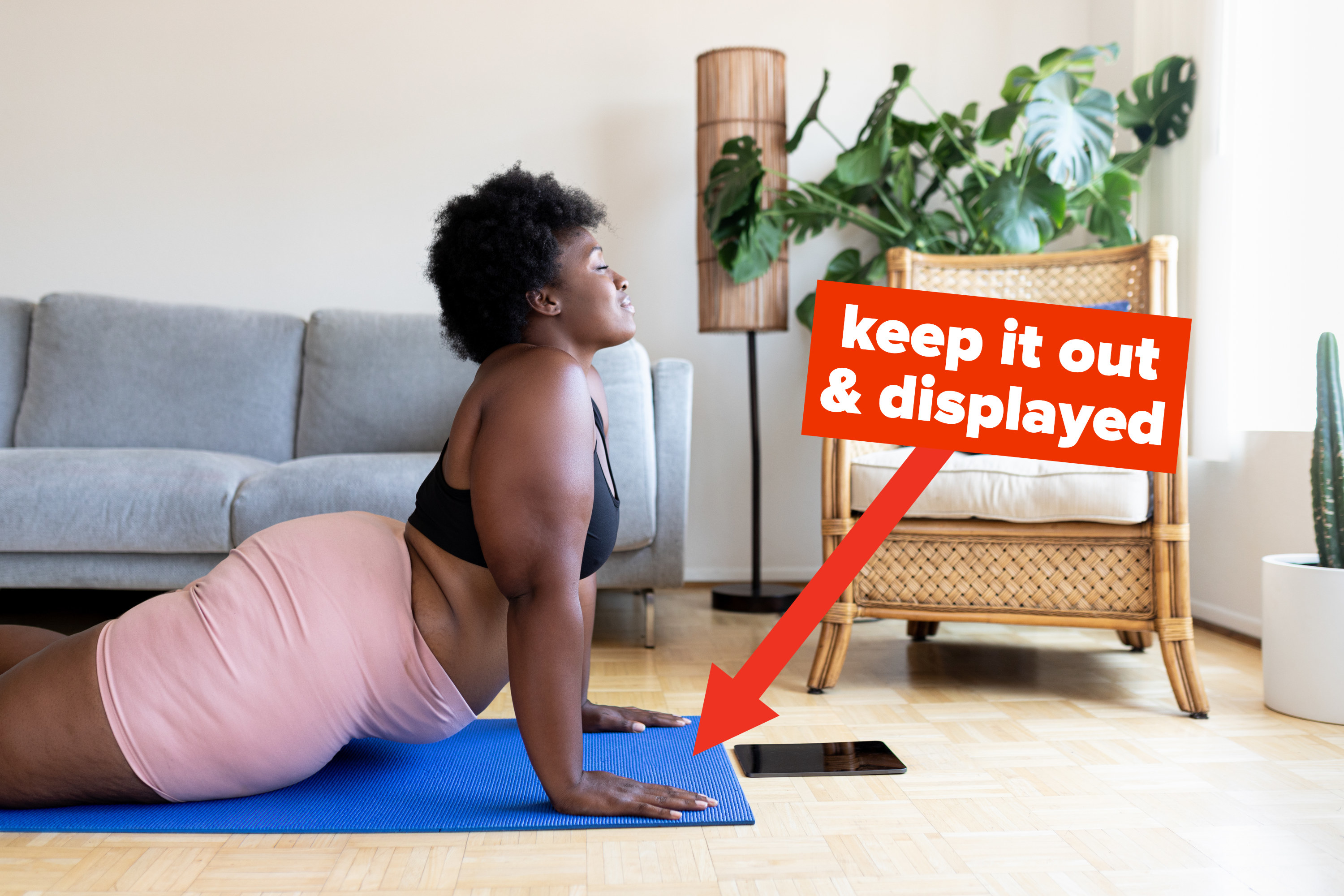
🏠 DESIGN TIP #4: Biophilic design is everywhere these days. By tapping into this nature-inspired design movement (it's not as cryptic as it sounds!), you'll create a more relaxed and mindful space for yourself — and you just might improve your mood while doing so.
"We humans have a natural affinity for anything natural, really," Ben explained. "It's that phenomenon called biophilia, and people have talked about it quite a lot lately."
To grossly oversimplify biophilic design, it's all about bringing elements of the natural world into our constructed spaces, and it can look quite different depending on the circumstance. Biophilic design doesn't suggest that we merely fill our homes with plants and paint our walls in earth tones — it's actually far more nuanced than that.
One major aspect of biophilic design is that of patterns, which exist in practically infinite applications within nature — from snowflakes to each and every tree that surrounds us. Patterns soothe us, whether we're experiencing them outdoors or in our own homes. As Ben says, this is due to "ordered complexity." Our brains enjoy interpreting patterns because there's some sort of structure there, even if we're just taking in a simple subway tile backsplash or sheet of wallpaper.
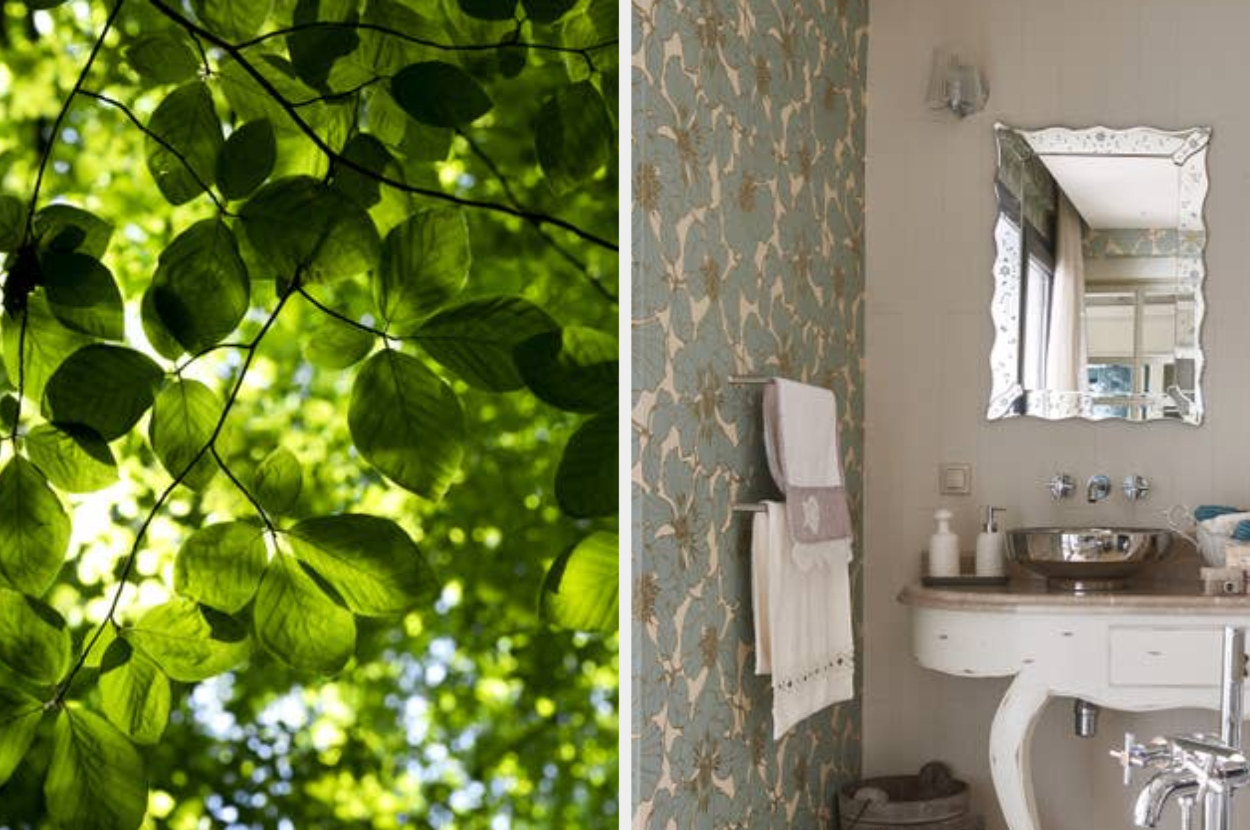
But biophilic design doesn't end with patterns — it also encompasses other elements, like natural materials (think: natural wood or stone), and even opting for furniture or objects that are curved instead of angular.
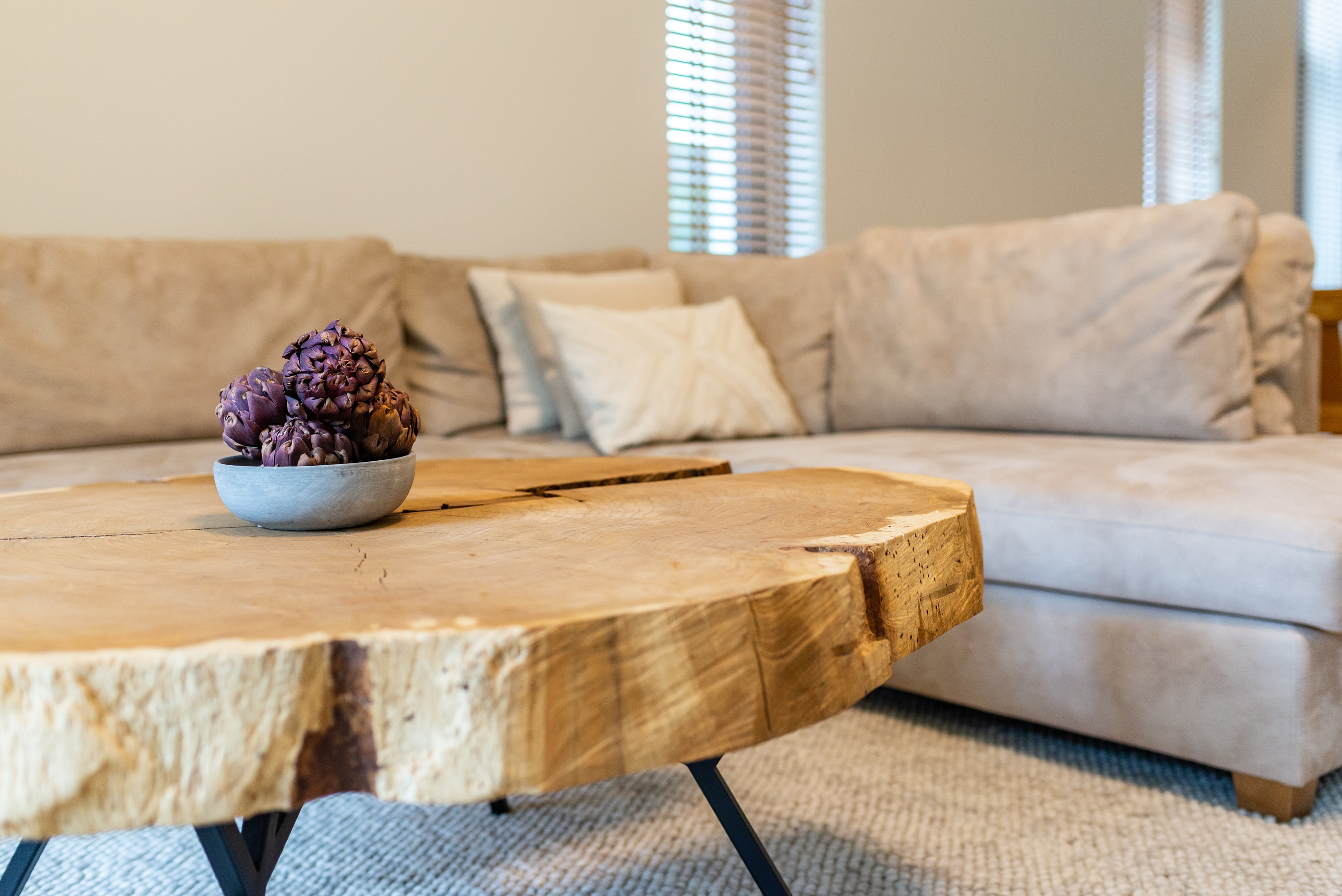
If you'd like to incorporate some elements of biophilic design into your own home (but don't really know where to start), here are just a few ideas to get going:
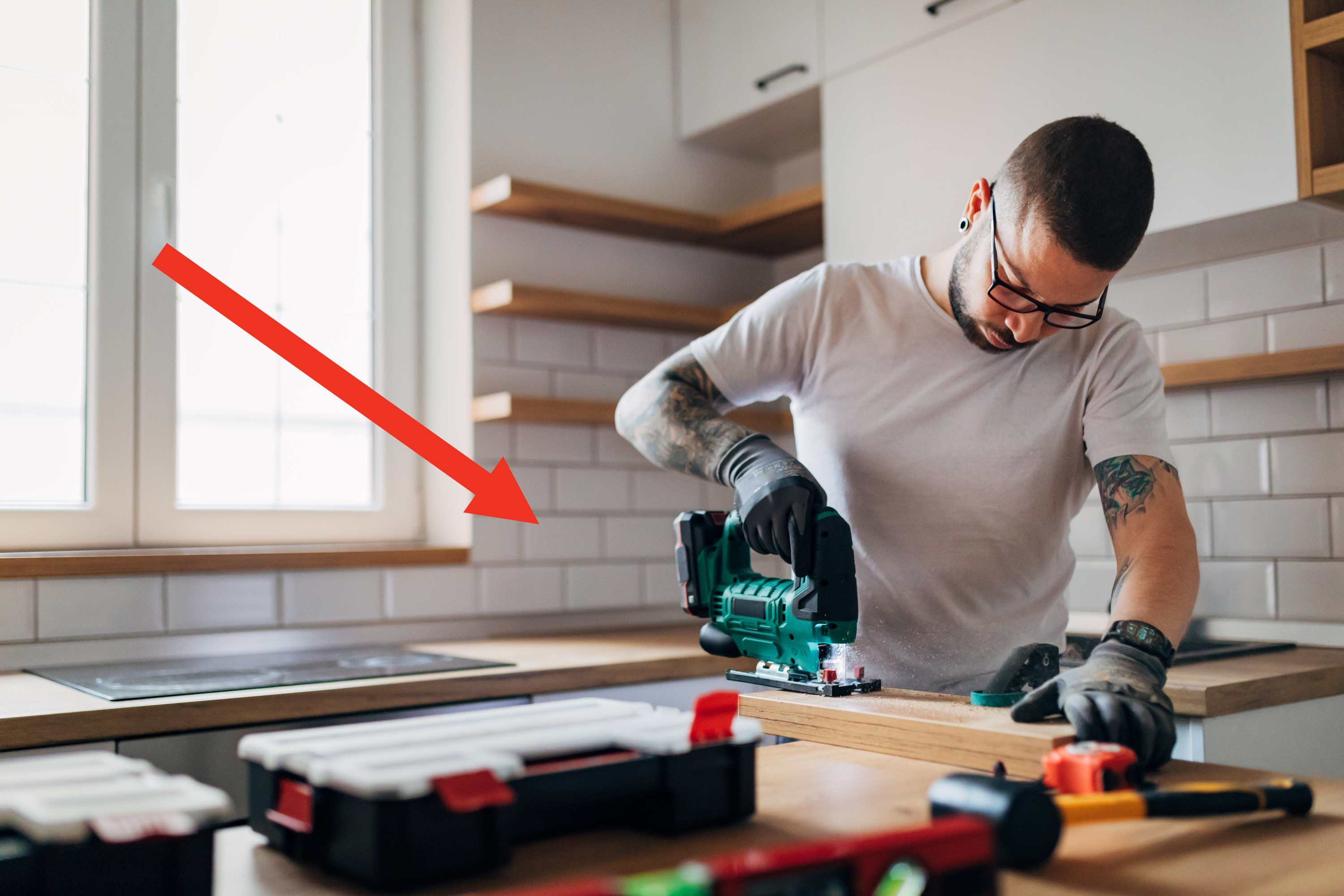
🏠 DESIGN TIP #5: Since we own more and more "stuff" than ever before (and smaller homes are on the rise due to affordability concerns), maximizing the storage opportunities in your home is a crucial method for minimizing overall stress levels.
Look, we all have our own tolerances when it comes to mess and clutter in our own homes...and that tolerance can easily change over time! There have been times in my life when I've been able to find productivity amidst the messiest of home environments, and others when I can't even start my day until things are more or less tidy. Of course, no one's making the argument that messy spaces are at all visually-appealing, but the fact is that clutter — in any way, shape, or form — is never good for our brains. (And that's a science-backed fact!)
"It might seem like quite a boring part of the home, and not necessarily something that people want to spend money on, but storage is really, really important in the home," Ben shared. "Mess in general is shown to be linked to stress and higher cortisol levels, plus people in messy homes tend to record higher 'depressed mood scores'."
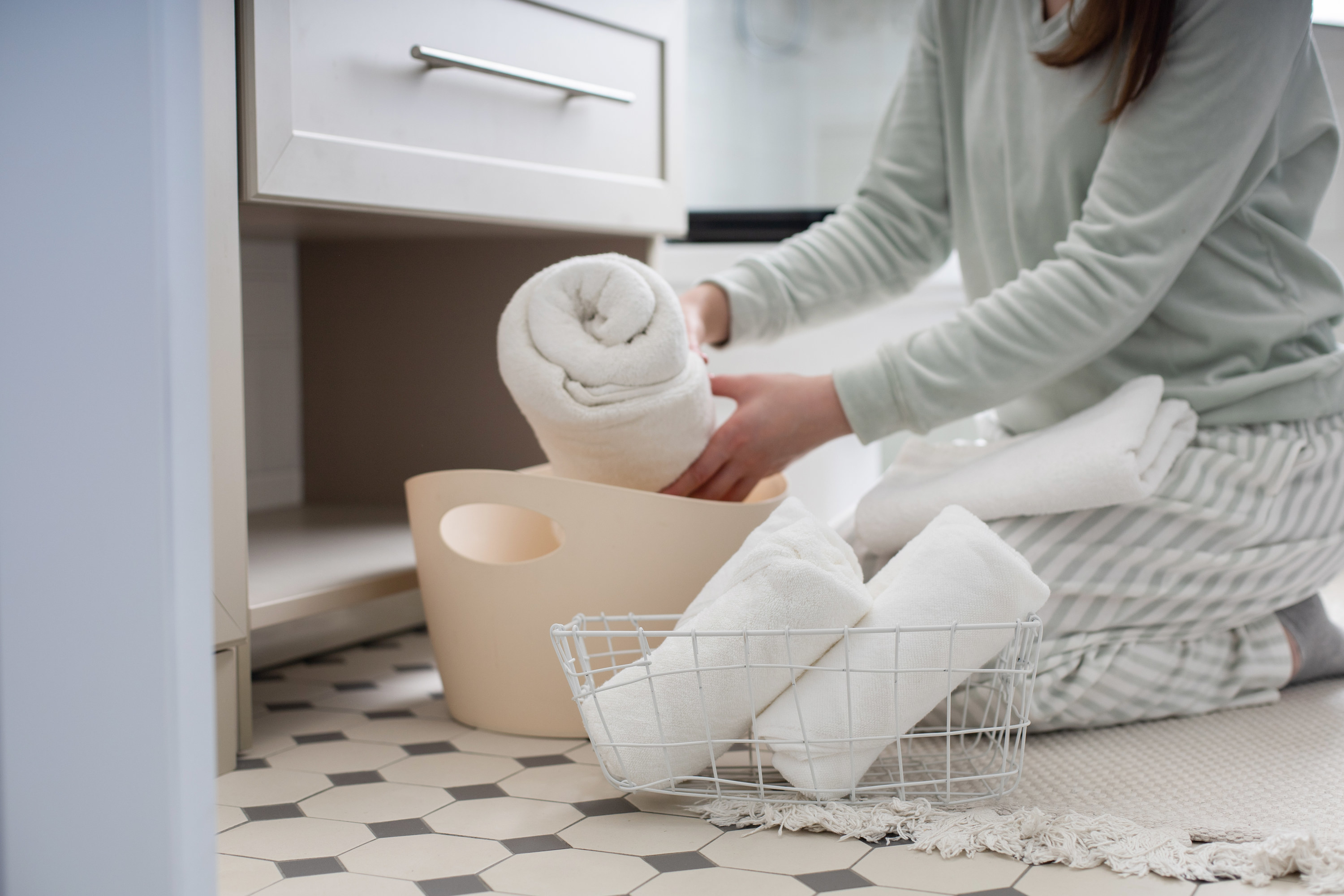
Depending on your exact circumstances, your storage needs are probably pretty specific...but these are just a few of Ben's ideas for maximizing storage opportunities in your home, regardless of your budget:

🏠 DESIGN TIP #6: Adding live plants to indoor spaces is a design concept that's nothing new. When it comes to our well-being, however, their actual benefits might surprise you.
I'm one of those people who totally fell for the "get plants to have better air quality" argument, but as far as plants' effect on our overall wellness, it actually has very little to do with the air itself. (If you're concerned about air quality, you should probably just opt for a good ol' air purifier instead.)
"I think it's a bit of a misconception that plants are going to massively improve air quality in in a space...unless you have a mini jungle in your room," Ben said. "The bigger value of plants is the mental health benefit we get from them."

Now listen: I'm well aware that not everyone on this planet has been blessed with a green thumb, so if a lingering fear that you "kill every plant you touch" is keeping you from buying one, my best advice is to visit an actual brick and mortar plant store or local nursery and talk to a professional.
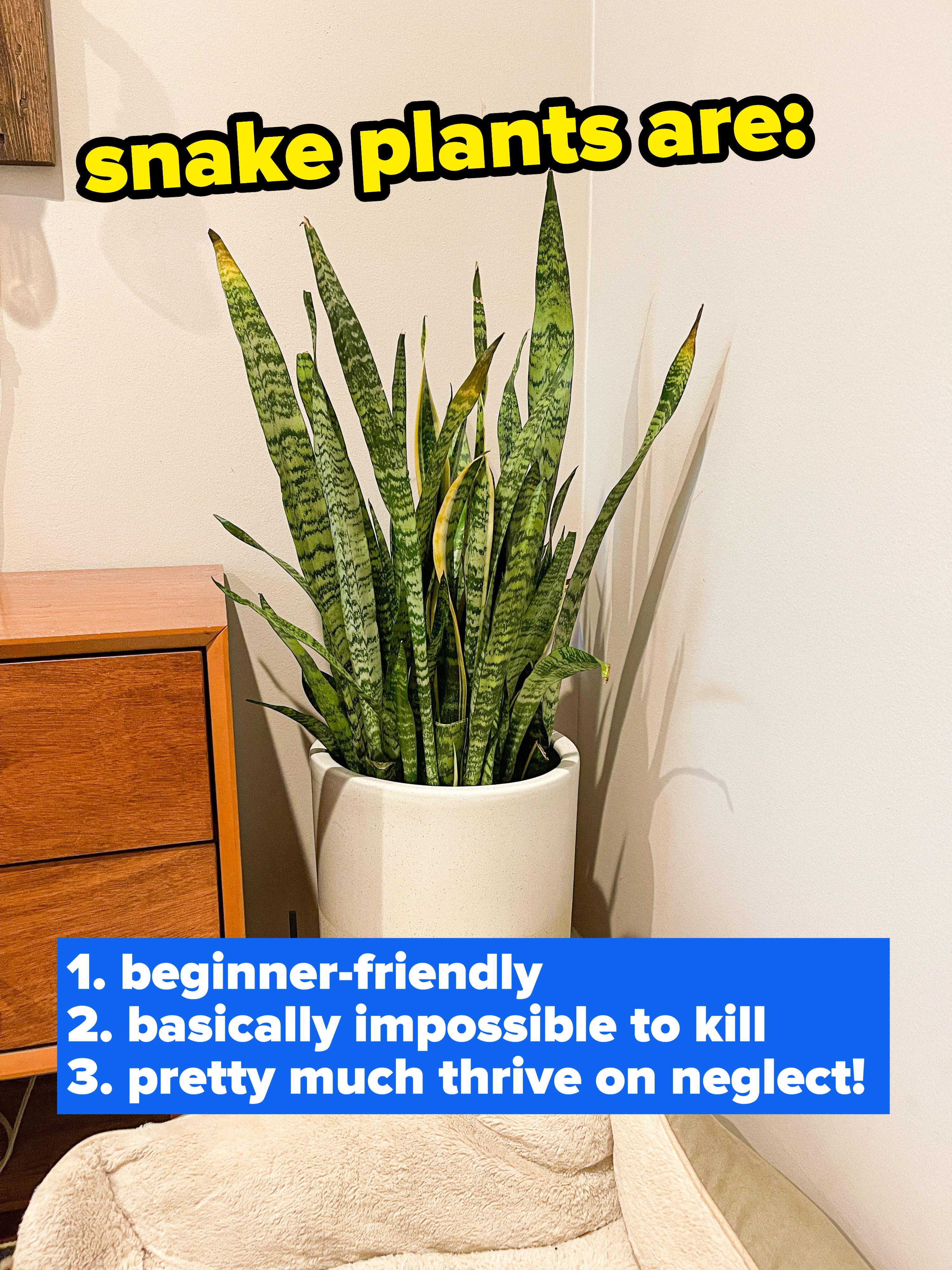
🏠 DESIGN TIP #7: Designating a distinct working area in your home can make it much easier to "switch off" at the end of the day — and in turn, you'll lessen the likelihood of burnout (and the health concerns that come with it). The best part is: you can accomplish this whether you live in a 100-square-foot studio apartment or a sprawling mansion.
When COVID first hit in 2020, our homes became more than just places for us to rest after a long day of work, or gather and connect with loved ones. For many, they became our workplaces, sanctuaries, and relaxation spaces. As Eleanor puts it, "a big challenge that people have faced in the last few years is your home having to become all things to all people — how do you manage that while keeping it a safe retreat for yourself?"
Though the transition to remote work has been an overall positive shift for many of us, it's certainly not without it's downsides — and as far as physical and psychological wellness is concerned, there are a few worrying aspects in particular...
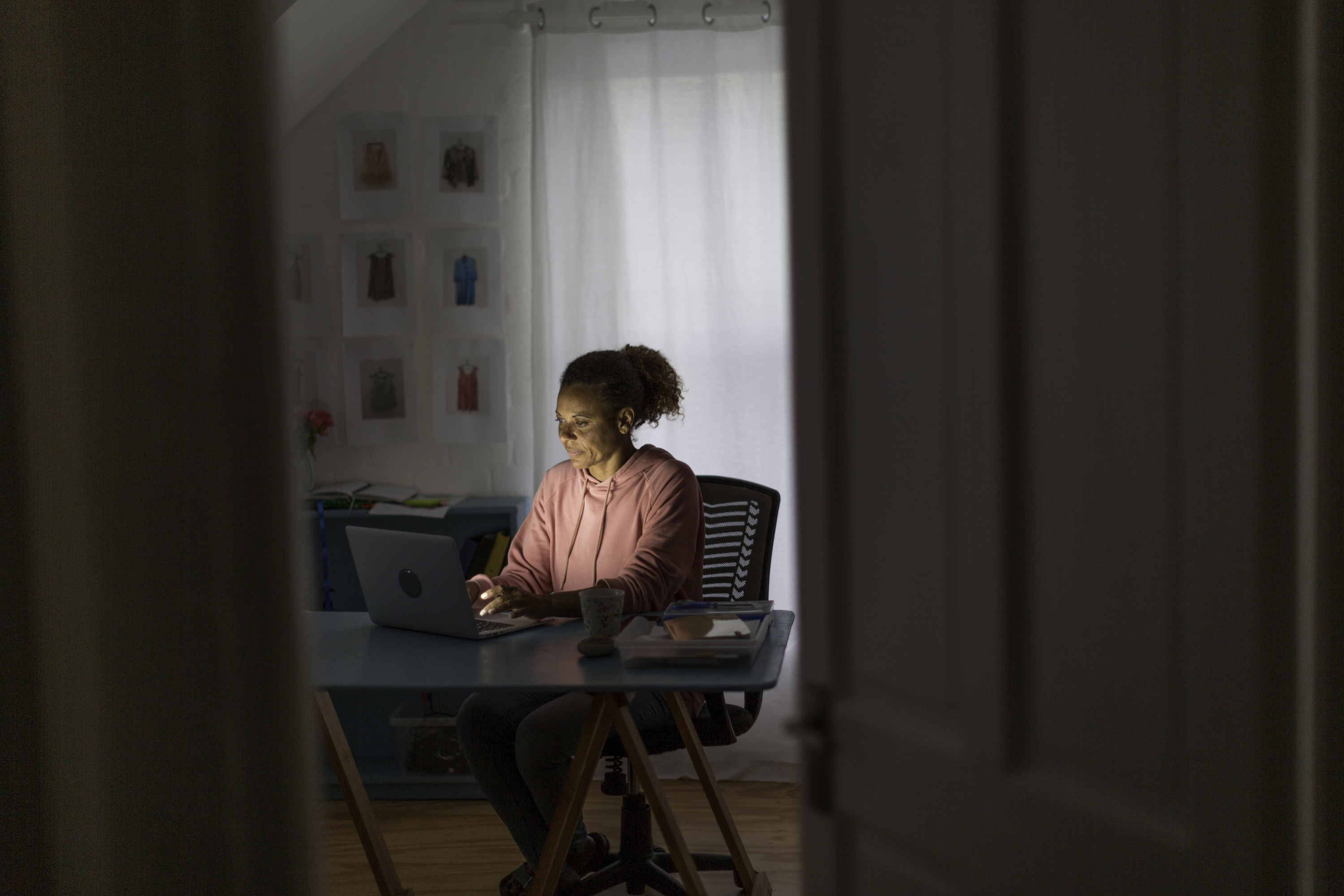
While a sure-fire solution to this predicament would be through home renovation — I mean, who wouldn't love a home office that we can physically "commute" to every day — that is not the reality for the vast majority of us. So for the rest of us who can't modify floor plans in rented homes (or for homeowners who can't afford a renovation), we can achieve comparable results through clever, affordable design techniques.

🏠 DESIGN TIP #8: Up-cycled, pre-loved items are making a major comeback when it comes to interior design...but beyond aesthetic value and affordability, these items can actually combat our collective "eco-anxiety" and minimize stress.
I'll speak for myself here: When I buy secondhand items instead of opting for brand new ones, it just makes me feel good — not to mention they usually come with a much more affordable price tag. Turns out that feel-good effect is more universal than I realized, and it can actually be an excellent means of combatting the "eco-anxiety" most people experience...even if they don't totally realize it.
"70% of Americans say that they worry about the environment," Ben said, "and over 50% say that they actually feel helpless about the environment." That collective worry is categorized as eco-anxiety, and buying secondhand items is just one of the many ways we can counteract it.
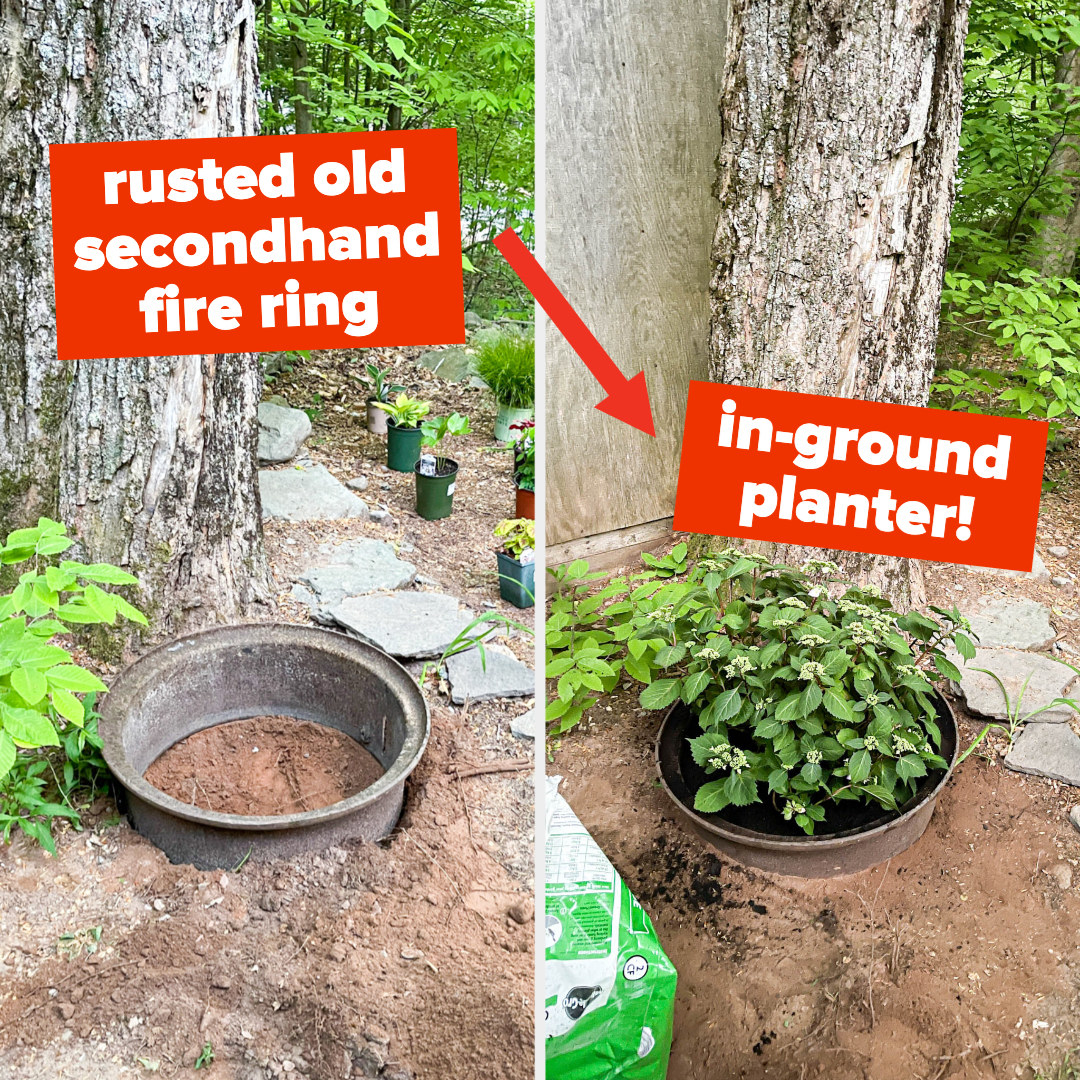
Ben Channon is an architect, author, TEDx speaker, and mental well-being advocate, and is currently a Director at the well-being design consultancy Ekkist. His second book, The Happy Design Toolkit, was published in March 2022, and you can follow him on both Instagram and Twitter.
Eleanor Ratcliffe is a Lecturer in Environmental Psychology at the University of Surrey. Her research focuses on the links between environment and well-being, especially natural settings and experiences of place attachment. You can learn more about the Environmental Psychology Research Group here, and find her research profile here.
